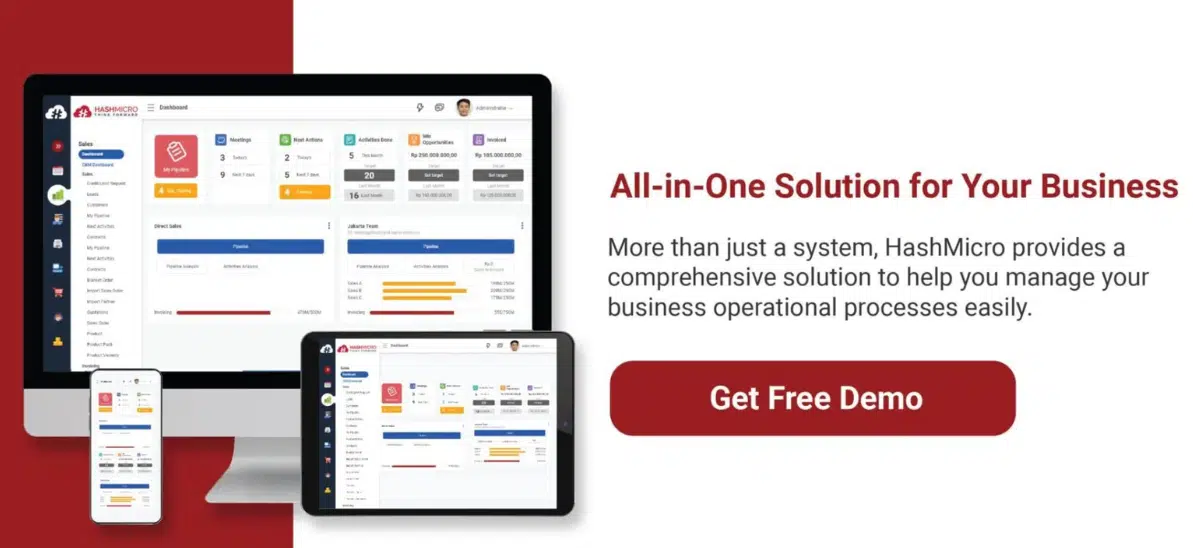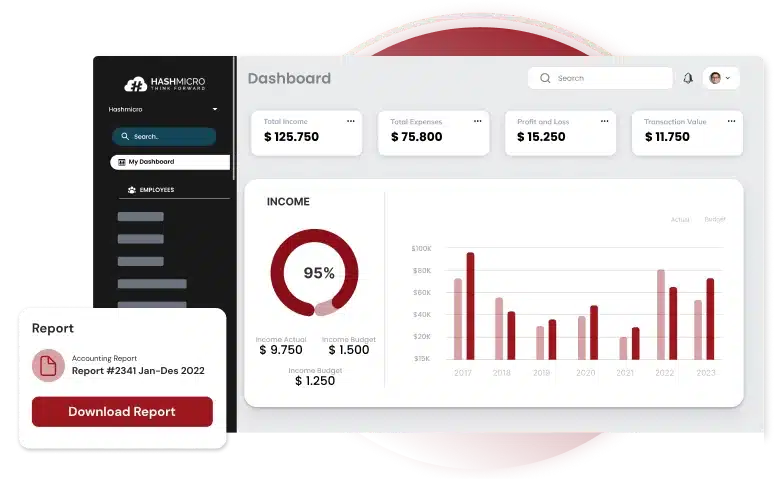Struggling with rising loan costs and financial unpredictability? Many Singaporean businesses, from SMEs to large firms, face challenges in managing debt, especially when unclear about how interest expenses impact their bottom line and financial reports.
Based on 2024 estimates by Lendingpot.sg, local business loan rates now range between 5.5% and 7.5%. With such high borrowing costs, uncontrolled interest expenses can quickly drain profits and distort financial planning.
The right accounting strategy can simplify tracking, budgeting, and forecasting of interest expenses. With accurate calculations and automated reports, businesses can make informed decisions while staying compliant with financial reporting standards.
Many successful companies now rely on automation and real-time data to manage financial overheads. Curious how understanding interest expenses can sharpen your business edge too? Keep reading to see how you can take control of your financial strategy.
Table of Content:
Table of Content
Key Takeaways
|
What is Interest Expense?
Interest expense refers to the cost a business pays when borrowing funds. This includes interest on loans, credit lines, bonds, or other forms of debt. It’s recorded on the income statement and reflects how much a company is spending to finance its operations through external capital.
According to standard reporting practices, interest expense is listed separately from operating costs. This distinction allows business owners and analysts to better evaluate how much a company relies on debt and how effectively it manages financing. The figure reflects accrued interest for the reporting period, not necessarily what was paid out.
Interest expense typically appears just below EBITDA, helping stakeholders distinguish operational performance from financing decisions. In some cases, companies may report this item within SG&A, depending on internal accounting policies or industry norms.
Types of interest expense
Businesses may incur various types of interest depending on how they choose to finance their operations. Each type has its own purpose, cost structure, and accounting treatment. Below is a comparison of the most common forms of interest expense:
| Type of Interest | Source | Common Use | Financial Reporting Impact |
| Debt Interest | Bonds, corporate notes | Long-term capital raising | Listed as a non-operating expense below EBIT |
| Loan Interest | Bank loans, credit lines | Working capital, asset purchases | Accrued and expensed during the loan period |
Debt interest reflects long-term financing, while loan interest serves short-term needs. Each interest type reveals a business’s cash flow and capital management. Understanding this breakdown is essential for assessing financial ratios.
How Interest Expenses Work
Understanding interest expense is crucial for evaluating borrowing costs and their impact on a company’s financial health. It represents the cost of financing operations through debt, such as loans, bonds, or credit lines. Listed as a non-operating expense, it reduces taxable income and affects profitability.
Interest accrues over time and may not align with payment dates. If unpaid, it appears under current liabilities on the balance sheet. If prepaid, it’s listed under current assets. This accounting practice ensures that financial records accurately reflect borrowing costs during each reporting period.
Relationship between principal, interest rate, and loan term
The interest expense of a loan depends on three factors: principal, interest rate, and loan term. Higher principal results in more interest. The interest rate influences borrowing costs; a higher rate raises total loan costs. Finally, the loan term determines interest accumulation, with longer terms leading to more interest overall.
A larger principal, higher interest rate, or longer loan term increases interest expenses. Businesses must manage these factors to control costs and maintain cash flow. Balancing borrowed amounts, securing favourable rates, and choosing shorter terms can minimise expenses.
The effect of interest expense on business profitability
Since interest expense is deducted from earnings before tax, it directly lowers net profit. Companies with high debt may see shrinking profit margins, especially if rates increase or revenue growth slows.
This can reduce the capital available for reinvestment and signal financial strain to investors. Monitoring this expense is key for maintaining long-term financial stability.
How to Calculate Interest Expense: Formulas and Examples
Interest expense is a key component in assessing a company’s financial health, reflecting the cost of borrowing over time. There are two common ways to calculate interest expense: using the basic formula or a more detailed approach that accounts for fluctuations in debt balances. Here’s a breakdown of both:
1. Basic formula: Principal x Interest Rate x Time
The basic formula for calculating interest expense is:
Interest Expense = Principal x Interest Rate x Time
Where:
- Principal is the amount of debt or loan.
- Interest Rate is the annual interest charged.
- Time is the duration for which the interest is calculated, typically in years.
For example, if a company borrows $100,000 at an interest rate of 6% for one year, the interest expense would be:
Interest Expense = $100,000 x 6% x 1 year = $6,000
This straightforward formula is most commonly used for fixed-rate loans where the principal remains constant.
2. Detailed formula: Interest Rate (%) x [(Beginning + Ending Debt Balance) / 2]
The second formula is typically used when there are fluctuations in the principal amount of debt throughout the year, such as with variable-rate loans or debt that is paid down or added to during the period. The formula is as follows:
Interest Expense = Interest Rate (%) x [(Beginning + Ending Debt Balance) / 2]
Where:
- Beginning Debt Balance is the starting debt amount.
- Ending Debt Balance is the debt balance at the end of the period.
This formula calculates the average debt balance over the period, offering a more accurate representation of interest costs for businesses with fluctuating debt levels.
Example of the Detailed Formula:
If a company starts the year with a $100,000 debt balance and ends the year with $120,000, with an interest rate of 6%, the interest expense would be calculated as:
Interest Expense = 6% x [($100,000 + $120,000) / 2] = 6% x $110,000 = $6,600
This method accounts for the change in the debt balance throughout the year, providing a more accurate result for businesses with varying debt levels.
Where Does Interest Expense Appear on the Income Statement?
Interest expense is typically listed as a separate line item below EBIT (Earnings Before Interest and Taxes). This distinction shows the separation between a company’s core operational activities and the cost of financing. It’s an important way to illustrate the difference between operating profit and financing costs.
Depending on the company’s accounting practices, some businesses may include interest under SG&A (Selling, General, & Administrative) expenses. However, it’s typically separated from core operational expenses for clarity.
How Interest Expense Impacts Net Income
Interest expense directly affects a company’s net income by reducing profits after all expenses are accounted for. Since it’s tax-deductible, it lowers taxable income, ultimately reducing taxes owed. However, higher interest expenses can also significantly reduce profitability, especially for highly leveraged companies.
Managing interest expenses is essential, as they directly impact the company’s bottom line. Effectively controlling interest costs can help improve financial health and maintain better cash flow.
Interest Coverage Ratio
The Interest Coverage Ratio is a financial metric that helps assess a company’s ability to pay its interest expenses. It is calculated by dividing EBIT (Earnings Before Interest and Taxes) by interest expense. A higher ratio indicates better financial health.
Example breakdown
A company with $100 million in debt at 8% interest would incur an interest expense of $8 million. If their EBIT is $80 million, their ratio would be 10, indicating strong coverage. However, if EBIT drops to $24 million, the ratio falls to 3, signalling potential issues.
| EBIT ($M) | Interest Expense ($M) | Interest Coverage Ratio |
| 80 | 8 | 10 |
| 40 | 8 | 5 |
| 24 | 8 | 3 |
A higher ratio demonstrates that a company can comfortably meet its interest payments. A ratio above 5 is generally considered healthy, while below 3 suggests the company might struggle to cover interest expenses, especially during difficult economic periods.
Why Interest Expense is Important for Businesses
Interest expense plays a crucial role in managing a company’s costs. Effectively optimizing this expense is key to ensuring that the business maintains healthy profitability. By controlling interest expenses, businesses can improve their profit and loss balance, facilitating better financial planning and long-term stability.
The impact of interest expense on cash flow cannot be overstated. Since it reduces net income, it directly affects a company’s profitability. However, with effective management, businesses can ensure that their cash flow remains steady while continuing to meet financial obligations and generate sustainable growth.
Risks and Challenges with Interest Expense
To manage interest expense effectively, businesses must tackle both high-interest costs and risks from fluctuating rates. These elements directly affect profitability, especially during economic downturns. It’s essential for businesses to understand and mitigate these challenges to maintain financial stability.
Managing high-interest costs in business operations
Managing high-interest costs can be a significant hurdle, especially during unfavourable economic times. Companies with substantial debt may struggle to maintain profitability as interest expenses increase. It’s essential for businesses to carefully manage their debt levels to avoid rising costs and financial instability.
Impact of interest rate fluctuations on interest expenses
Interest rate fluctuations can greatly impact a company’s expenses. When interest rates rise, businesses with variable-rate debt face higher interest payments, straining their cash flow. Businesses need to proactively manage debt and assess how rate changes might affect their finances.
To manage these risks, investors and analysts monitor key solvency ratios, such as debt-to-equity and interest coverage. These ratios help determine a company’s ability to manage its debt and ensure financial stability, particularly during tough economic conditions.
If you’re ready to gain full control over your financial operations and optimize your interest management process, check out HashMicro Accounting Software by clicking the banner below for detailed pricing and implementation options.
Simplify Financial Management with HashMicro
Managing financials in a business can be complex, especially when juggling expenses like interest costs, operational costs, and payroll. With HashMicro Accounting Software, companies can simplify their financial management and gain real-time insights into cash flow, debt, and profitability.
- Bank Integration – Auto Reconciliation: Automatically sync your bank transactions and reconcile accounts seamlessly, saving time and reducing manual errors in financial
- Multi-Level Analytical: Gain deeper financial insights with customizable, multi-level analysis tools, allowing businesses to track performance across departments or projects with precision.
- Profit & Loss vs Budget & Forecast: Compare actual profit and loss against your budget and forecast, enabling better tracking of financial goals and improved decision-making.
- Cash Flow Reports: Monitor your cash inflows and outflows in real-time, ensuring liquidity and helping you plan for future expenses effectively.
- Forecast Budget: Create accurate budget forecasts with advanced predictive tools, helping you anticipate future financial trends and align your strategies accordingly.
Conclusions
Interest expenses are a crucial part of managing corporate finances, and handling them efficiently can drastically improve a company’s financial stability. The ability to track and manage interest effectively ensures that businesses are not overburdened by rising costs. This directly impacts the overall profitability and the company’s solvency.
With HashMicro Accounting Software, businesses can better manage these expenses and optimize their financial strategies. The system offers various financial management features that can help businesses keep track of their debt and interest expenses efficiently.
If you’re ready to gain full control over your financial operations and optimize your interest management process, schedule a free demo with HashMicro today and experience the ease of automated accounting firsthand.
FAQ About Interest Expense
-
What are the potential consequences of high interest expenses for businesses?
If not managed properly, excessive debt servicing can hinder a business’s ability to invest in growth opportunities, pay dividends, or maintain sufficient working capital.
-
How can businesses reduce their interest expenses?
To reduce interest expenses, businesses can consider refinancing debt to lower interest rates, consolidating loans, or reducing their overall debt load.
-
What is the relationship between EBIT and interest expense?
EBIT (Earnings Before Interest and Taxes) represents a company’s profitability before accounting for interest expenses and taxes. The interest expense is subtracted from EBIT to calculate EBT (Earnings Before Tax), showing how much income remains after servicing debt obligations.
-
How does the interest coverage ratio help investors and analysts?
The interest coverage ratio is a key financial metric used by investors and analysts to assess a company’s ability to meet its interest payments. A higher ratio indicates a stronger ability to pay interest, while a lower ratio can signal potential financial distress or a high level of debt relative to earnings.





























































